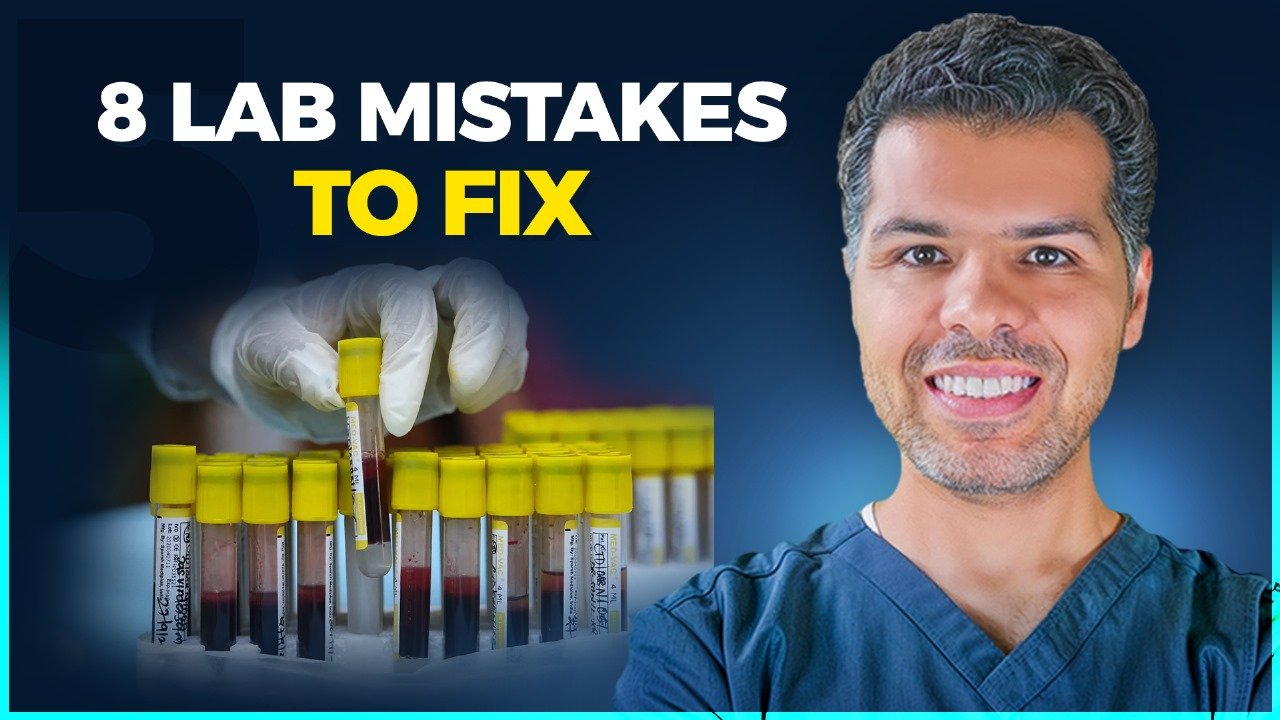Diagnosis:
- There is no consensus on the definition of hyperkalemia, some define it as any K level > 5, and some as any K level ≥ 5.5 meq/L.
- All patients with hyperkalemia should get an immediate 12-lead EKG.
- If the EKG is normal or similar to the baseline EKG, as some patients may have abnormal EKG to start with, is there any reason for the patient to have hyperkalemia:
- Renal failure
- Potassium supplements
- Drugs known to cause hyperkalemia
- If no EKG changes and no reason for the patient to develop hyperkalemia, then the potassium should be rechecked before any treatment is provided.
- Potassium concentration can be artificially high secondary to:
- Hemolysis in the blood tube related to the blood drawing techniques.
- Severe leukocytosis (WBC>50K)
- Thrombocytosis (Plt >1M).
- If there’s any Hyperkalemia-related EKG, initiate treatment immediately, this is a true hyperkalemia
Hyperkalemia-induced EKG changes:
- Wide complex tachycardia.
- STEMI elevation mimicking STEMI.
- Bradyarrhythmias: High-grade AV blocks, sinus bradycardia, high-grade AV block with slow junctional and ventricular escape rhythms, slow AF.
- BBB and fascicular blocks.
- Peaked T wave.
- P wave widening/flattening, PR prolongation.
- Sine waves.
- Any bizarre-looking EKG or an EKG with changes that don’t make sense should make you think of hyperkalemia.
- Hyperkalemia-induced EKG changes don’t necessarily appear in chronological order, and not necessarily all of them appear.
The severity of hyperkalemia:
- Severe:
- The presence of Hyperkalemia-induced EKG changes regardless of K level.
- K => 6.5 meq/L
- Moderate:
- K 6 – 6.4 meq/L
- Mild:
- K 5.5-5.9 meq/L
Management
- All hyperkalemia patients should placed on telemetry.
- The first step of the management in all hyperkalemic patients, regardless of the severity of Hyperkalemia, is to:
- Discontinue any potassium supplements including oral, IV, or TPN
- Screen the patient’s medications and stop any medication known to cause hyperkalemia like:
- Heparin
- ACE/ARBs
- K-sparing diuretics
- Antibiotics (trimethoprim, pentamidine, ketoconazole, IV penicillin G-potassium)
- NSAIDs
- Nonselective beta-blockers (e.g., labetalol).
- Calcineurin inhibitors (cyclosporine, tacrolimus)
- Digoxin toxicity, succinylcholine.
- The second step is to provide IV calcium for cardiac stabilization when indicated.
- The third step is to shift K intracellularly when indicated
- The fourth step is to eliminate K through the renal route with diuretics or hemodialysis.
The management of mild hyperkalemia
- For Hemodialysis patients, just have nephrology dialyze them.
- For Non-HD patients, a watchful approach is reasonable as long as all sources of potassium are discontinued, and repeat K level in 12-24 hours.
- A more aggressive approach is to give 1-2 doses of IV loop diuretics like furosemide, and then check K 6-12 hours after that.
The management of moderate Hyperkalemia
- For HD patients, have them dialyzed the same day.
- For non-HD patients, eliminating potassium with an IV loop diuretic should be performed:
- 1-2 doses of IV furosemide (40-80 mg) can be used.
- Recheck K in 6-8 hours.
- Monitor urine output
- The patient’s volume status must be assessed before giving IV loop diuretics:
- Hypovolemic patients should be resuscitated with IVF first, then given IV loop diuretics second.
- Euvolemic patients should receive IV loop diuretic first followed by IVF to replace the lost volume.
- Hypervolemic patients should only receive IV loop diuretics.
- Isotonic solution should be used for fluid resuscitation, the patient’s HCO3 level determines the type of isotonic solution:
- LR or plasmalyte if HCO3 >= 22
- HCO3 drip If HC03 < 22, HCO3 drip will help restore volume and also it will shift K intracellularly and improve renal K excretion.
- Please avoid using NS in hyperkalemia, NS can lead to normal gap acidosis which can worsen hyperkalemia.
- LR isn’t contraindicated in hyperkalemia, the amount of K in lactated ringer solutions is very small.
- In IVF resuscitation, the fluids should be infused rapidly, this includes HCO3 drip which can be given as fast as 500-1000 ml/hour.
The management of severe Hyperkalemia
- The management of severe hyperkalemia consists of:
- Cardiac stabilization with IV calcium
- Shifting K intracellularly
- K elimination from the body
- Remember the chronicity factor, The more chronic the hyperkalemia is the less worrisome it is. A hemodialysis patient whose K is chronically elevated around 6 and has a K of 7 is far less worrisome compared to a patient who has an acutely elevated K of 7, the latter will require immediate treatment, while the first one, may only require a HD session and K restriction.
Cardiac stabilization with IV Calcium:
- IV calcium is available as calcium gluconate or calcium chloride.
- Peripheral access: 3 grams IV calcium gluconate over 10 minutes.
- Central access: 1 gram IV calcium chloride over 10 minutes, or slow IV push.
- IV Calcium only lasts for about 30-60 minutes, so we may need to give multiple doses for persistent, dangerous arrhythmias (e.g. ongoing bradycardia with hypoperfusion). Remember Hyperkalemia is more dangerous than hypercalcemia.
Potassium shifting:
Insulin
- shifts K intracellularly, it must be given IV. please don’t give it SQ.
- We typically give 10 units of IV regular insulin followed by 2 amps of D50 if BS <180, and one amp if BS 180-250, it’s always safer to go in the hyperglycemia rather than hypoglycemia side. Make sure to continue monitoring blood sugar to catch any hypoglycemia early.
- The insulin-induced potassium shift lasts for ~4-6 hours and may need to be repeated if there is a delay to definitive therapy (e.g., diuresis or dialysis).
Beta-2 agonists
- Shift K intracellularly, albuterol or salbutamol are the main ones here, I typically use albuterol if the patient is unstable where I am throwing everything to bring the K down.
- Albuterol-induced K shift is small and lasts for ~2-4 hours.
- You have to give a big dose of 10-20 mg via nebulizer to see this effect, small doses don’t work.
- Epinephrine can be useful in patients with critical hyperkalemia who are hypotensive or bradycardic.
NaHCO3 drip
-
- Can help restore volume, shift K intracellularly, and promote K renal excretion
- It has to be given as a drip, bicarb amps should be avoided because they are hypertonic which can osmotically drive K extracellularly worsening hyperkalemia.
- It should be used only if there’s metabolic acidosis (HCO3 < 22) and the patient is euvolemic or hypovolemic.
- It should be avoided in patients who are volume-overloaded.
- NAHco3 drip cab infused rapidly at 500-1000 ml/hour if used for volume resuscitation.
Elimination of K from the body
- HD patients will require emergent HD.
- In non-HD patients we should give a challenge of an aggressive diuretic regimen,, volume status should be assessed first:
- Hypovolemic patients should be resuscitated with IVF first, then given IV loop diuretics
- Euvolemic patients should receive IV loop diuretic first followed by IVF to replace the lost volume
- Hypervolemic patients should only receive IV loop diuretic
- An isotonic solution should be used for fluid resuscitation, the patient’s HCO3 level determines the type of isotonic solution:
- LR or plasmalyte if HCO3 >= 22
- HCO3 drip if HC03 < 22, HCO3 drip will help restore volume and also it will shift K intracellularly and improve renal K excretion
- In critically ill patients a cocktail of diuretics (Furosemide + Chlorthalidone + Acetazolamide) can be tried:
- Furosemide 80 mg IV + Chlorothalidone 500 mg IV + Acetazolamide 500 mg IV.
- The patient should start producing a large amount of urine, if minimal response, call nephrology and prepare for HD.
- Monitor electrolytes closely every 2-4 hours
- I don’t recommend using this cocktail if the patient isn’t closely monitored, if the patient is on the floor we may give a high dose of furosemide of 120-200 and again make sure to monitor electrolytes closely.
- Fludrocortisone can be tried here in severe hyperkalemia if recent ACE/ARB use also if recent NSAID or beta-blocker use or adrenal insufficiency 01-0.2 mg po x1.
- Potassium binders like Kayexalate (Sodium polystyrene) or Batiromer have no role in the management of acute hyperkalemia. If a GI binder is to be used, Sodium zirconium 10 mg PO TID can be used.






Central Venous Access: What You Need to Know Before Starting Inpatient Rotations
10 Medications You Must Master Before Your ICU Rotation
Positive troponins! MI or not?
Comprehensive Guide to Antibiotic Spectrum: Gram-Positive, Gram-Negative, and Anaerobic Coverage